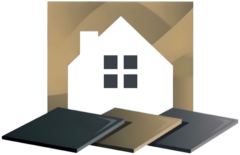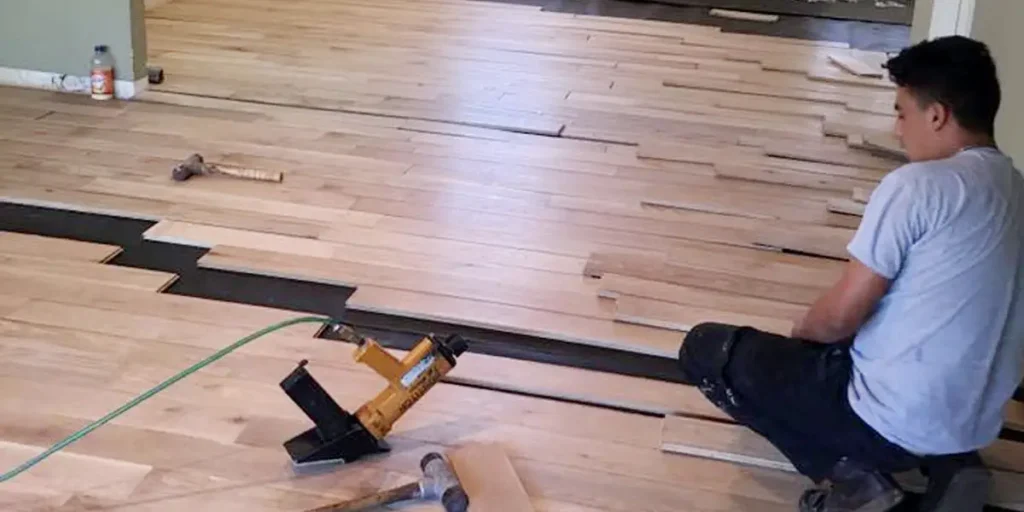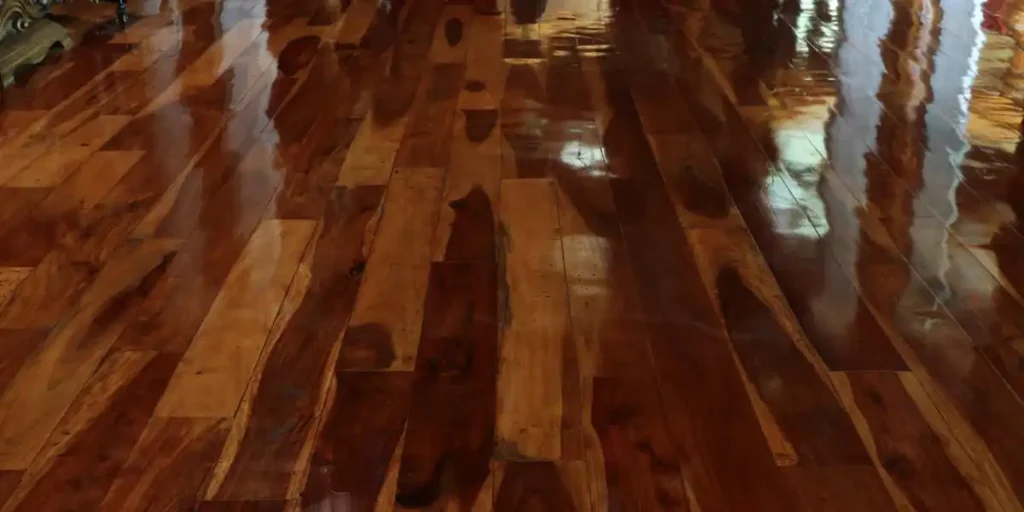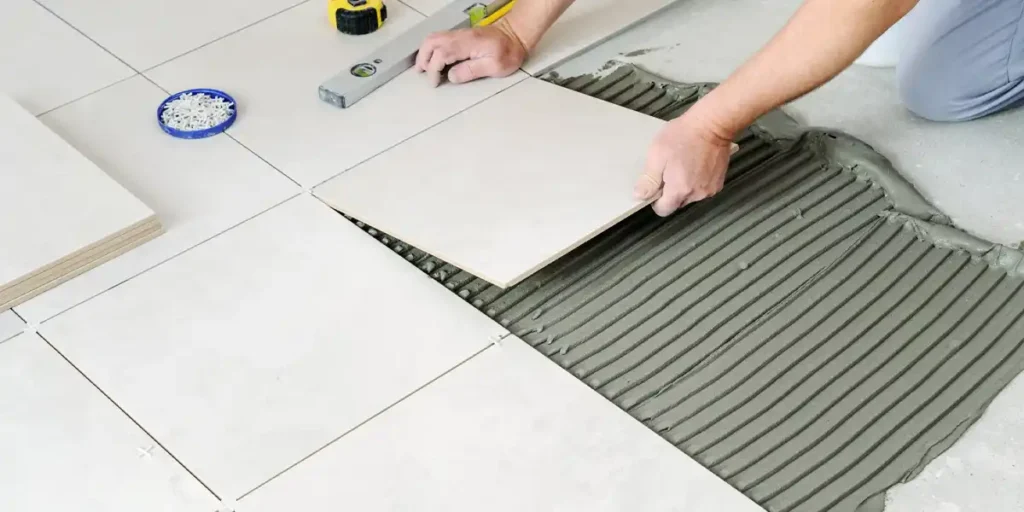Sustainability might not always come to mind when you think about flooring options. However, as homeowners and businesses strive to adopt greener lifestyles, bamboo hardwood flooring has emerged as an eco-friendly superstar. It’s not just flooring; it’s a way to reduce your carbon footprint without compromising on style or durability.
Imagine stepping into a home where the floors are beautiful and help save the planet. Bamboo hardwood flooring offers that possibility. Its fast-growing nature, durability, and versatility make it the ideal choice for anyone looking to make a sustainable impact. In this blog, we’ll explore why bamboo hardwood flooring stands out as a game-changer for eco-friendly living.
What Makes Bamboo a Unique Flooring Material?
Bamboo is often mistaken for wood, but it’s actually a type of grass. This distinction is part of what makes it such a unique and sustainable material. Unlike hardwood trees, which can take decades to mature, bamboo regenerates quickly and can be harvested in as little as five years. Its rapid growth rate is just one reason why it’s such an environmentally friendly choice.
Another standout feature of bamboo is its strength. Strand-woven bamboo, one of the most popular types used in flooring, is incredibly durable, often outperforming traditional hardwoods like oak and maple. Bamboo is also naturally resistant to moisture, mold, and pests, making it a practical option for a wide range of environments.
How Bamboo Hardwood Flooring is Made
The process of creating bamboo hardwood flooring is a testament to innovation and sustainability. Here’s how it works:
- Harvesting: Mature bamboo stalks are harvested after about 5–7 years of growth. This process doesn’t damage the root system, allowing the plant to regenerate quickly.
- Stripping and Treating: The stalks are stripped into thin layers, boiled to remove starches and sugars, and treated to resist pests and mold.
- Pressing: For strand-woven bamboo, the strips are shredded and compressed under high pressure with adhesives, creating a dense, durable material.
- Finishing: The pressed bamboo is cut into planks, sanded, and coated with protective finishes. These finishes are often low in volatile organic compounds (VOCs), making them safer for indoor air quality.
This meticulous process results in bamboo hardwood flooring that is not only beautiful but also highly functional and sustainable.
Reason 1: Bamboo is a Renewable Resource
Bamboo’s rapid growth cycle and ability to regenerate make it one of the most renewable materials available. Choosing bamboo flooring supports sustainable practices.
Fast Growth Compared to Traditional Hardwood
One of bamboo’s most compelling features is its rapid growth. While traditional hardwood trees like oak or walnut can take 20–100 years to mature, bamboo is ready for harvest in just 5–7 years. This short growth cycle allows for frequent harvesting without depleting the ecosystem.
Imagine the environmental impact of replacing hardwood trees every few decades versus harvesting bamboo every few years. Bamboo’s ability to regenerate quickly from its root system makes it a renewable resource that can meet the demands of modern living without causing deforestation.
Minimal Environmental Impact
Bamboo cultivation requires fewer resources compared to hardwood trees. It grows densely, requires less land, and thrives without the need for chemical fertilizers or pesticides. Additionally, its extensive root system helps prevent soil erosion, maintaining the health of the land it grows on.
This minimal impact on the environment makes bamboo a responsible choice for those who care about the planet. Opting for bamboo hardwood flooring is a step toward reducing the strain on natural resources.
Reason 2: Bamboo Flooring Reduces Carbon Footprint
Bamboo absorbs more carbon dioxide during its growth than many traditional hardwoods, making it an excellent choice for reducing environmental impact.
Carbon Absorption During Growth
Bamboo is a carbon sink, meaning it absorbs more carbon dioxide than it emits during its growth. In fact, bamboo forests capture significantly more CO2 than an equivalent area of hardwood forest, helping combat climate change.
When you choose bamboo hardwood flooring, you’re not just adding style to your home; you’re also contributing to the reduction of greenhouse gases in the atmosphere. This unique characteristic makes bamboo a standout choice for eco-conscious homeowners.
Sustainable Manufacturing Practices
The manufacturing process for bamboo flooring often involves fewer energy-intensive steps compared to traditional hardwood. Many manufacturers also use adhesives and finishes that are low in VOCs, further reducing the environmental impact.
By supporting companies that follow sustainable practices, you’re helping promote eco-friendly production methods. It’s a simple way to make a big difference.
Reason 3: Strand-Woven Bamboo Outperforms Traditional Hardwoods in High-Traffic Areas
Strand-woven bamboo flooring is not only durable but also specifically designed to handle the rigors of busy spaces. The unique manufacturing process involves shredding bamboo fibers and compressing them under intense pressure, resulting in a flooring material harder than many traditional hardwoods like oak and maple.
This high-density construction ensures exceptional resistance to dents, scratches, and wear, making strand-woven bamboo ideal for areas that experience heavy foot traffic. Entryways, kitchens, and living rooms often face constant use, and strand-woven bamboo holds up remarkably well under these conditions. Its strength allows it to maintain a fresh, polished look for years, reducing the need for frequent replacements or repairs.
Additionally, strand-woven bamboo’s durability extends its versatility. For families with pets or young children, this type of flooring provides a worry-free surface that can handle the occasional spill or accidental scuff without showing signs of damage. It combines practicality with aesthetic appeal, ensuring your floors look great while withstanding daily use.
Reason 4: Bamboo Flooring Contributes to Indoor Air Quality
Creating a healthier indoor environment starts with choosing materials that promote clean air. Bamboo hardwood flooring contributes to this goal by incorporating low-VOC finishes, which limit the release of harmful chemicals into your home. Unlike some flooring options that can negatively impact air quality, bamboo provides a safer and healthier choice for your family.
Bamboo’s natural resistance to mold and mildew further enhances its suitability for maintaining good indoor air quality. In homes where allergies or respiratory issues are a concern, bamboo flooring provides a hypoallergenic surface that doesn’t trap dust, pollen, or other allergens like carpets might.
For families with children or pets, these qualities are especially valuable. Bamboo flooring creates a cleaner, healthier living space, ensuring that every member of the household enjoys a comfortable environment. Beyond its aesthetic and environmental benefits, bamboo flooring stands out as a practical option for those prioritizing health in their home design.
Reason 5: Versatility in Modern Home Design
With a variety of finishes and styles, bamboo hardwood flooring complements contemporary interiors. Its adaptability makes it suitable for almost every room in the house.
Aesthetic Variety
Bamboo hardwood flooring comes in a wide range of colors, textures, and finishes, making it easy to match any design style. Whether you prefer the natural look of light bamboo or a darker, stained finish, there’s a bamboo option to suit your taste.
Its versatility extends beyond color. The unique grain patterns and textures of bamboo add character and warmth to any room, making it a popular choice for modern interiors.
Adaptability for Various Rooms
Bamboo flooring works well in almost every room of the house. Its moisture resistance makes it suitable for kitchens, while its durability ensures it can handle high-traffic areas like hallways. It’s also a great choice for bedrooms and living rooms, where comfort and style are key.
Bamboo Flooring Maintenance Tips
Proper care for bamboo hardwood flooring ensures it stays durable and beautiful for years. Here are practical tips for maintenance:
Daily Cleaning
- Sweep or vacuum your bamboo flooring regularly to remove dirt and dust that can scratch the surface.
- Use a vacuum with a hardwood-friendly setting or a microfiber broom for best results.
Weekly Care
- Lightly mop your bamboo flooring with a damp mop and a wood-safe cleaner. Avoid soaking the floor, as excessive water can cause damage.
- Spot clean any spills immediately to prevent staining or warping.
Preventing Scratches
- Place felt pads on the bottoms of furniture to prevent scratches when moving items.
- Use area rugs or mats in high-traffic zones like entryways and hallways to reduce wear and tear.
- Keep pet nails trimmed to avoid scratching the surface.
Seasonal Maintenance
- Use a humidifier or dehumidifier to maintain consistent humidity levels, especially in climates with extreme seasonal changes.
- During winter, protect the floor from snow or moisture tracked in from outside.
Long-Term Care
- Refinish your bamboo flooring if it shows signs of wear. Strand-woven bamboo can be refinished once or twice, depending on the thickness of the top layer.
- Schedule periodic professional cleanings to restore the floor’s shine and longevity.
Products to Avoid
- Never use abrasive cleaners or tools, as they can damage the finish.
- Avoid wax or oil-based products, which can leave a slippery residue.
Applications of Bamboo Flooring
Bamboo hardwood flooring thrives in unique situations where other flooring options often fall short. Let’s explore some scenarios where bamboo shines and why it’s a game-changer for specific needs.
For Rental Properties
As a landlord, one of the biggest concerns is finding a flooring option that can endure frequent tenant turnover without needing constant replacement or repairs. Bamboo hardwood flooring is a smart solution. Its durability means it can withstand the wear and tear of daily life, whether it’s furniture being moved in or the foot traffic of multiple occupants.
Beyond being tough, bamboo is cost-effective in the long run. It provides a modern, stylish look that appeals to renters, making the property more attractive. Plus, its low-maintenance nature means you’ll spend less time and money on upkeep, ensuring happy tenants and fewer headaches.
Small Apartments
If you’ve ever lived in a small apartment, you know how important it is to make the space feel open and inviting. Bamboo hardwood flooring does just that. Its light, natural tones reflect light, creating an airy feel that makes even the smallest studio apartment look more spacious.
Wide planks or horizontal grain patterns can further enhance this effect, visually expanding the room. Bamboo’s moisture resistance also makes it a practical choice for areas like compact kitchens, where spills and humidity are common.
Yoga Studios or Gyms
Imagine walking into a yoga studio where the floor feels firm yet comfortable, providing the perfect foundation for balance and movement. Bamboo hardwood flooring offers a smooth, sturdy surface that’s gentle on joints, making it ideal for fitness spaces.
Its hypoallergenic properties also ensure a cleaner, healthier environment for participants. Plus, bamboo’s resilience can handle the demands of high foot traffic, fitness equipment, and the occasional dropped weight without losing its charm.
Cafes and Retail Spaces
For cafes and retail stores, the flooring needs to strike a balance between style and functionality. Bamboo hardwood flooring delivers both. Its chic, natural aesthetic creates a warm and inviting atmosphere that customers love, while its strand-woven variety resists scratches and dents from constant foot traffic.
Imagine a bustling coffee shop with baristas rushing around or a retail store with customers browsing every corner—bamboo holds up beautifully, retaining its appearance even under heavy use. It’s an investment that enhances the space’s appeal while keeping maintenance efforts low.
Eco-Friendly Renovations
If sustainability is at the heart of your renovation plans, bamboo hardwood flooring is a perfect choice. Homeowners pursuing eco-friendly certifications like LEED (Leadership in Energy and Environmental Design) benefit from bamboo’s renewable nature and minimal environmental impact.
Its fast growth rate and reduced need for chemicals during cultivation make it one of the greenest flooring options available. Choosing bamboo aligns with modern principles of sustainable living while still delivering the aesthetic appeal of hardwood.
Basements or Semi-Humid Areas
Traditional hardwood often struggles in humid environments, but bamboo hardwood flooring offers a practical alternative. Its natural resistance to moisture makes it ideal for basements, semi-humid climates, or rooms prone to occasional dampness.
Strand-woven bamboo takes this a step further by offering enhanced durability in these conditions, reducing the risk of warping or swelling. Whether it’s a finished basement for extra living space or a utility room with varying humidity, bamboo provides a reliable and stylish solution.
Wrapping it Up
Bamboo hardwood flooring is more than just a trend; it’s a sustainable solution for modern living. Its renewable nature, low environmental impact, and exceptional durability make it an eco-friendly choice that doesn’t compromise on quality or style.
By choosing bamboo, you’re not only enhancing your home’s aesthetics but also contributing to a healthier planet. Whether you’re renovating your space or building from scratch, bamboo hardwood flooring is a decision you can feel good about.
For the highest quality Bamboo flooring, contact Cardenas Flooring today!
FAQs
1. How long does bamboo hardwood flooring last?
With proper care, bamboo flooring can last 20–30 years or more, making it a long-term investment.
2. Is bamboo flooring suitable for bathrooms?
While bamboo is more moisture-resistant than traditional hardwood, it’s not ideal for areas with standing water, like bathrooms.
3. How do I clean bamboo hardwood flooring?
Regular sweeping and occasional damp mopping with a wood-safe cleaner are usually sufficient to maintain bamboo flooring.
4. Can bamboo flooring be refinished?
Yes, strand-woven bamboo can be refinished, although the number of times depends on the thickness of the top layer.
5. Is bamboo flooring pet-friendly?
Yes, its durability and scratch resistance make it a good choice for homes with pets.




